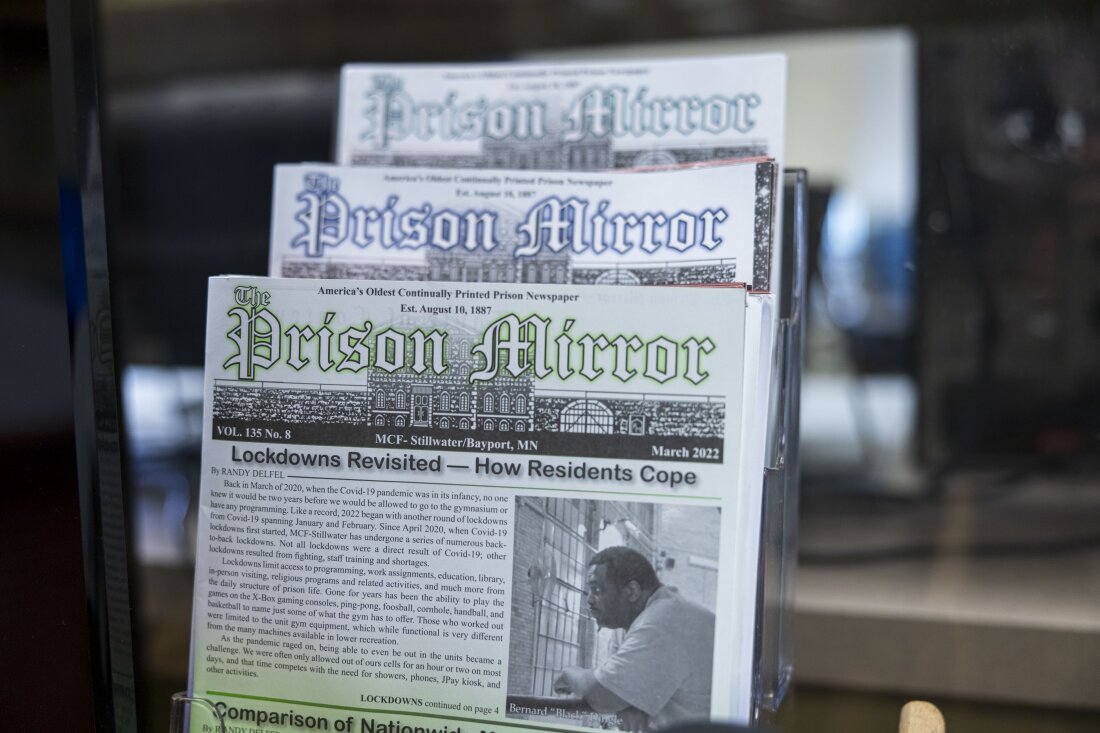
Previous issues of the Prison Mirror, which has been publishing since 1887, sit on display in the Minnesota Correctional Facility – Stillwater.
Kerem Yücel/MPR News
Kerem Yücel/MPR News
Inside a state prison near Stillwater, Minn., past the guards and the wings of cells stacked one on top of another, tucked in the corner of a computer lab, Richard Adams and Paul Gordon are fervently discussing grammar.
Both men are on staff at the Prison Mirror, a newspaper made by and for the people held at the Minnesota Correctional Facility – Stillwater. Gordon had written a profile on the prison art instructor. He read it aloud to Adams.
“I was curious if there was a certain style or something he preferred to paint. ‘When I get time I like Bob Ross, the guy that does the painting on the TPT channel,’” Gordon recited, referencing the Twin Cities’ PBS channel. Adams leaned in, a confused look on his face, and asked him to repeat the sentence.
“Is that what he said?” Adams asked. “It sounds like you’re saying you like the guy from the TPT channel.” He suggested Gordon add an attribution to the quote, like “he said” or “he replied.”
Conversations like this have been happening in this prison for more than a century. The Prison Mirror is one of the oldest prison newspapers in the country, running since 1887. Publications like this aren’t common, but in an era where many journalism outlets in the free world are struggling to thrive amid scores of layoffs, journalism behind bars is actually growing.
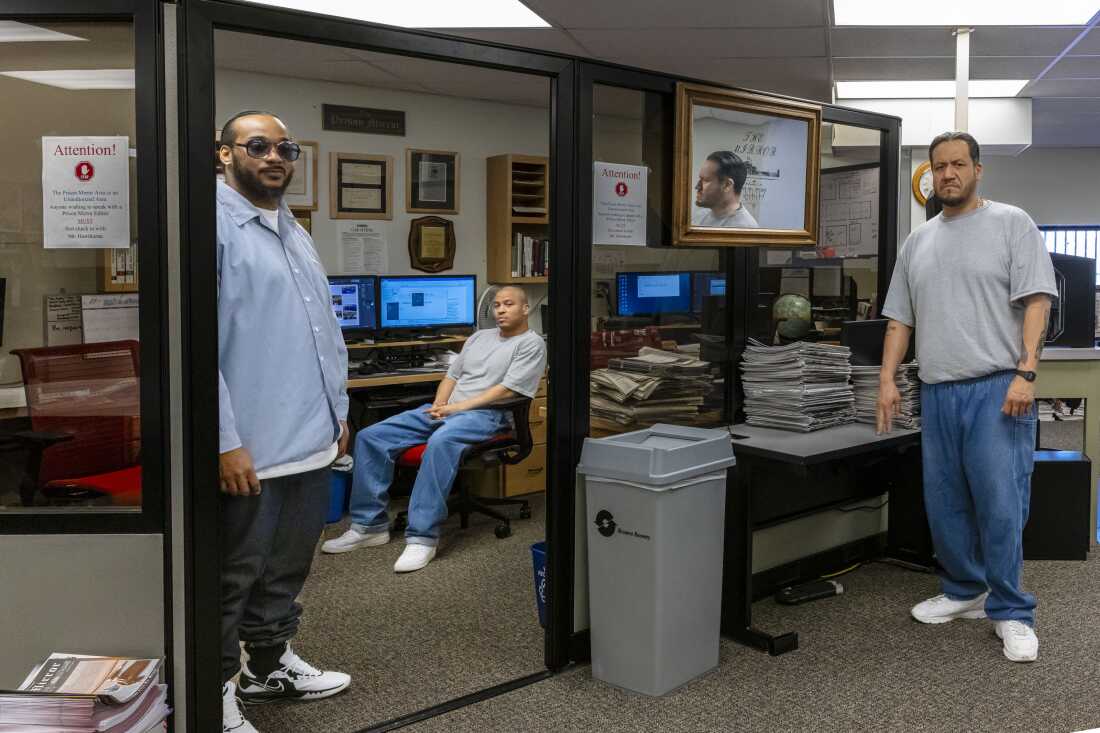



Richard Adams, left, Paul Gordon, center; and Patrick Bonga make up the staff of the Prison Mirror at the Minnesota Correctional Facility – Stillwater. The men say they’re limited in what they can write about, but they still find meaning in the work.
Kerem Yücel | MPR News
Kerem Yücel | MPR News
“Overall we do see a growth and a lot of interest in starting publications, starting podcasts even. And so that’s really quite exciting,” says Yukari Kane, CEO of the Prison Journalism Project.
Thirty years ago, she says there were estimated to be only six prison newspapers. Today, there are more than two dozen. That doesn’t take into account the hundreds of incarcerated writers submitting work to publications on the outside, like The Marshall Project’s Life Inside series.
Kane says this kind of work can offer a window into what prison is actually like, one that prison administrators aren’t necessarily going to offer up freely.
“There’s a lot of information that people who are inside prisons see and are experiencing every day. There’s some reporting that can only be done from inside,” she says.
Even if a newspaper doesn’t circulate far beyond the prison yard, it can offer a sense of empowerment for its writers.
“Having a newspaper, it’s beneficial to everybody. It informs the population. It gives you a voice,” Gordon says. “There’s a quote I like: You can either be an agent of destiny or a victim of it.”
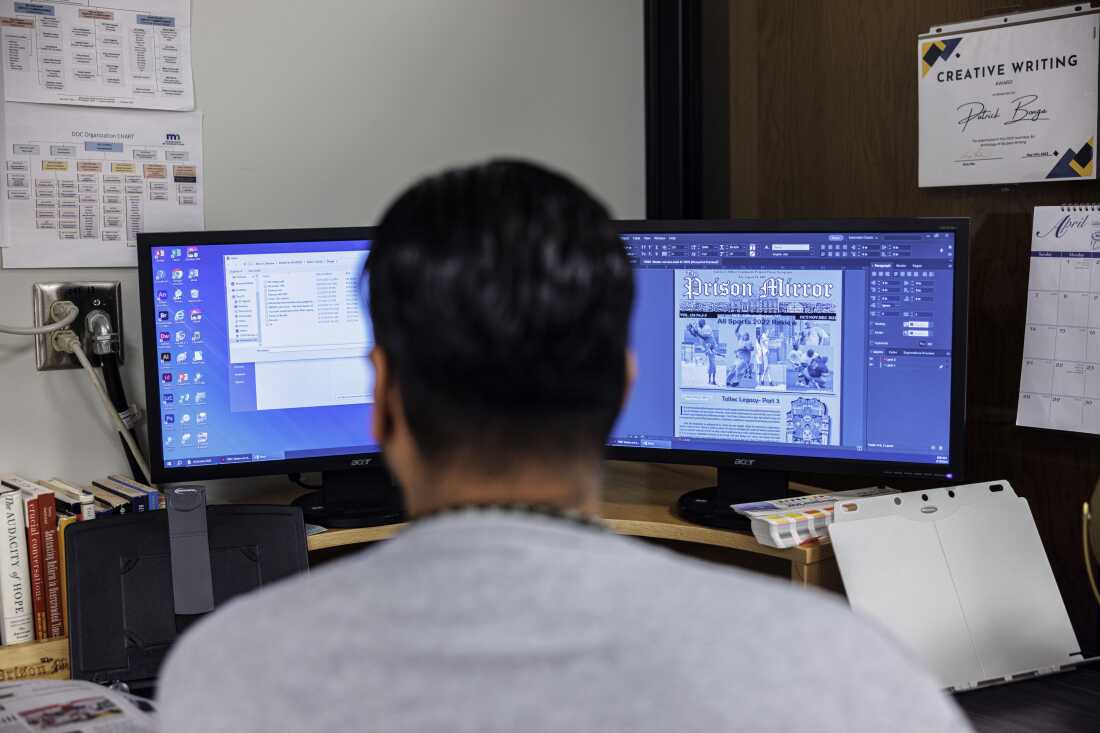



Patrick Bonga, a senior editor, works on the layout for the latest issue of the Prison Mirror at the Stillwater prison.
Kerem Yücel | MPR News
Kerem Yücel | MPR News
The Stillwater prisoners write book reviews, legal explainers, and summaries of local, national and international events for the monthly newspaper. One man recently submitted an essay on homesickness. Another wrote an editorial criticizing lockdowns. The men on staff — there are only three of them — had to apply for these unpaid jobs, and they’re highly sought after.
Adams says the job requires a lot of reading and research about what’s going on around the world and the prison. There are challenges. They don’t have the internet, for instance, so they have to rely on print media and articles printed out by prison staff.
‘They do have freedom of the press technically, but they’re not free themselves’
The prison also has to approve everything the paper publishes. The men say that can limit what they write about, especially if they want to report on the harsher aspects of their lives.
“I am limited in the sense of, they’re not going to let me print all types of crazy things about the water or the lockdowns or getting restrained or anything like that, which is understandable to a degree,” Gordon says.
Last fall, around 100 Stillwater prisoners refused to return to their cells. Gordon says the disobedience was their way of protesting extreme heat, poor water quality, and staffing shortages, which he says often result in lockdowns. He plans to write about it, but says he has been retaliated against in the past for sending reporting to outside publications.
“I was a lot more aggressive in my writing back then, and that was a learning experience for me,” he says.




Paul Gordon, who has been in prison for nearly 20 years, says he hopes “to write something that matters.”
Kerem Yücel | MPR News
Kerem Yücel | MPR News
Brian Nam-Sonenstein, a senior editor at the Prison Policy Initiative, says punishment for doing journalism behind bars is common.
“You can lose what are called good time credits, which are essentially time off of your sentence based on good behavior. You could go to solitary confinement. You could have your privileges revoked,” he says.
“They do have freedom of the press technically, but they’re not free themselves,” says Kane, of the Prison Journalism Project. “So they do face consequences in and potentially with the work that they do.”
Plus, having everything approved by prison administration can undermine the whole journalistic endeavor, though the ability to write freely varies widely across prisons, Nam-Sonenstein says.
“Incarcerated newsrooms are not necessarily fully captured organs of prisons, but we do have to recognize the constraints that are placed on them, especially when we compare it to free world journalism,” he says.
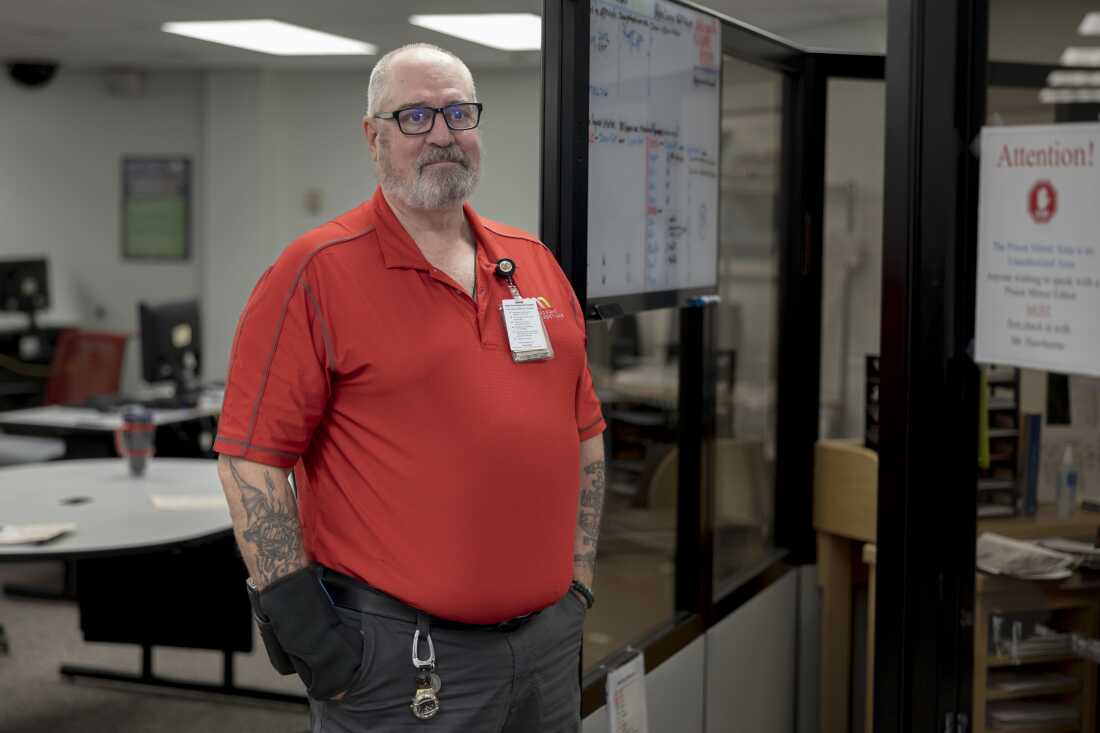



Marty Hawthorne, an instructor at the prison who oversees the paper, says he believes the prisoners have “right to do what they’re doing,” when it comes to publishing the newspaper.
Kerem Yücel | MPR News
Kerem Yücel | MPR News
Marty Hawthorne works at the Stillwater prison and oversees the Prison Mirror.
“They have a lot of freedom. My philosophy is: It’s their newspaper. It’s not my newspaper,” he says. “I believe they have a right to do what they’re doing.”
He says if the men plan to publish something critical, he makes sure whoever they’re writing about has an opportunity to respond. But he says he also pushes back when leadership tries to censor stories he believes are fair.
“Because that is my job,” he says. “They’re incarcerated people, right? They don’t have power or authority. Somebody has to speak up for them in these places.”
Gordon, who has been serving a life sentence for nearly 20 years for murder, has been working at the paper only for a few months.
“I believe my job is only to lay out the positions, and then let people come to their own conclusion,” he says. “I hope to write something that matters and through writing, I hope to leave a much different footprint than the one I’ve already left on the world.”
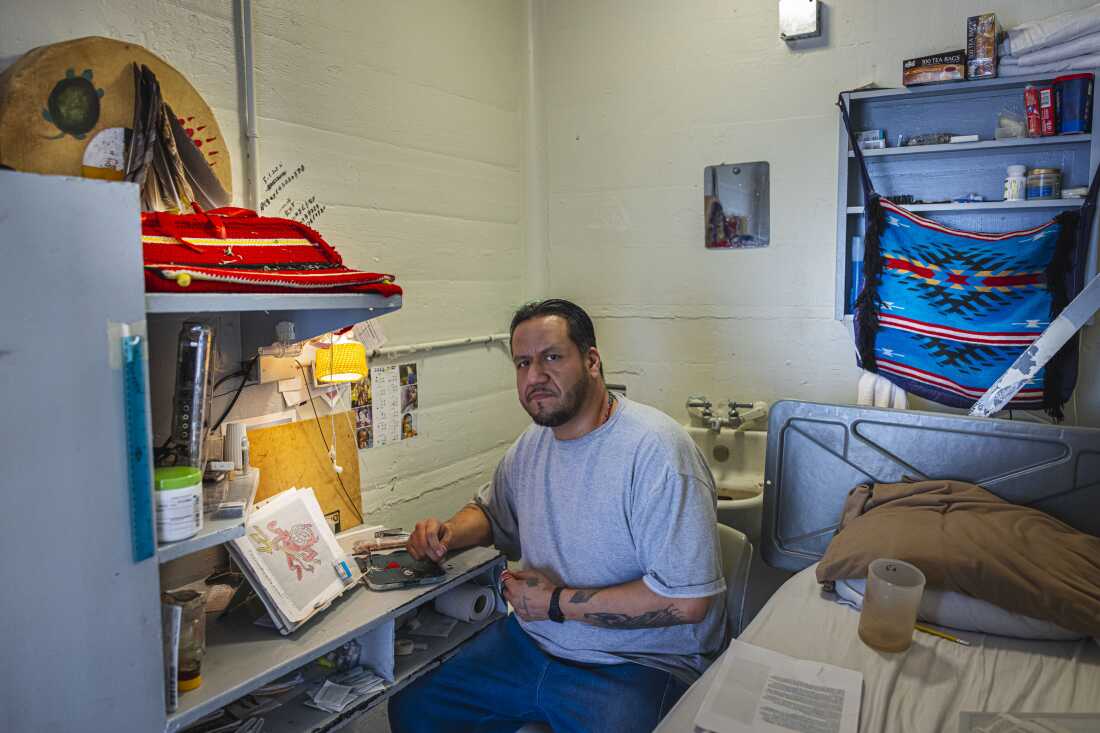



Patrick Bonga, posing in his cell, says practicing journalism has changed the way he thinks about the world and helped him fight against bias.
Kerem Yücel | MPR News
Kerem Yücel | MPR News
Patrick Bonga, a senior editor for the paper, says including all sides to a story has changed the way he thinks about the world. He’s been in and out of prison multiple times. Now in for assault, he says the newspaper is helping break that cycle.
“For the first 40 years of my life, any other opinion other than mine did not matter. But now just having to be objective and to put stories together that aren’t one sided, I’m now starting to practice in my own life a lot of fight against bias. And that’s a big thing,” he says.
For Gordon, making the paper isn’t just about journalism. It’s about getting to a turning point.
“When we first come to prison, it’s a journey to figure out how to do this time. We come here and we’re mad at the world, that life didn’t work out. We spend day after day after day trying to figure out and find that one moment where if we would have made that one decision, everything would have went right,” he says. “Then we get mad at the people around us for nobody helping us in that one moment. And it’s a journey to finally get to the point that we take responsibility for our own actions, that we can finally grow.”
Adams says he wants to keep his stories positive.
“I don’t want to bring negativity to the paper because we all know what’s wrong. Let’s bring some more of what’s positive, what’s right,” he says.
He set up a suggestion box in his cell, for other prisoners to weigh in on what they want to read. He also wants to start an advice column. He’s a father, and he thinks other men will have questions about how to be a good dad, even if their relationship with their kids is mostly over the phone.
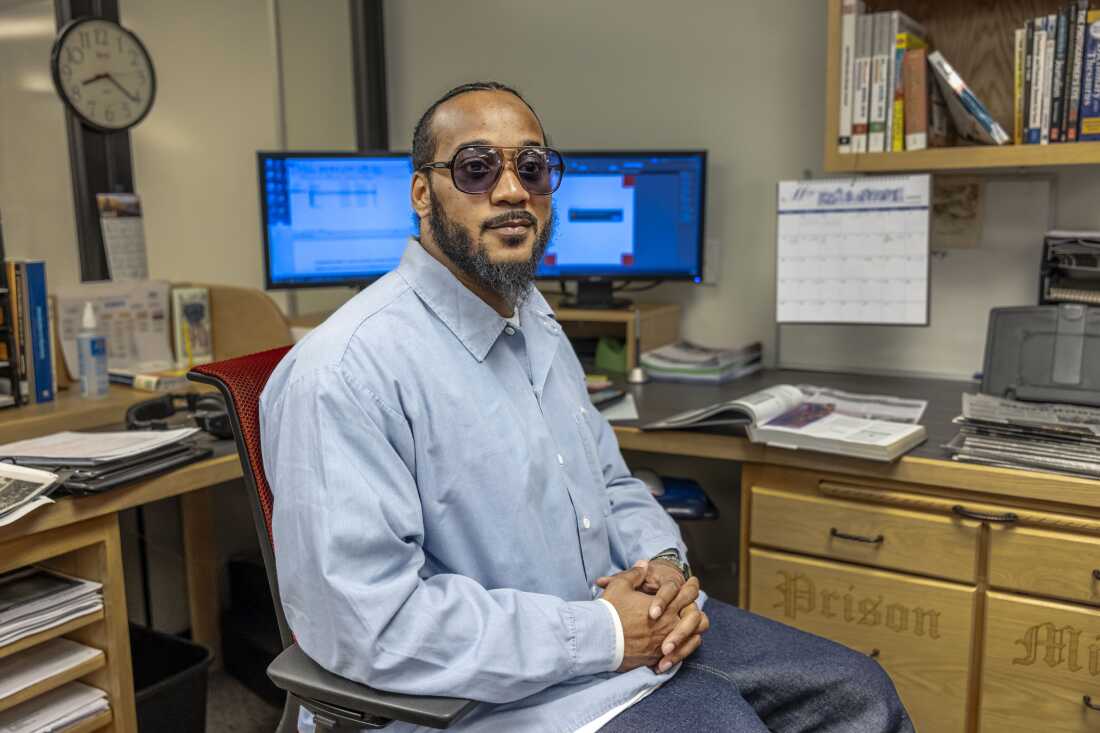



Richard Adams hopes to write positive stories for the paper the give other prisoners the tools they need to be successful when they leave prison.
Kerem Yücel | MPR News
Kerem Yücel | MPR News
Right now, he’s writing about side hustles men can get once they’re released to make a little extra money – things like driving for Uber and DoorDash, or selling flowers.
“You have a choice while you’re here, where you can change or you can go back out there and do the same things that got you in here. You can go back out there and at least try to make a difference,” he says.
After all, most people in prison get out and return to their communities. Adams wants to give them hope and the tools to start over when and if they get the chance.
This post was originally published on this site be sure to check out more of their content.






